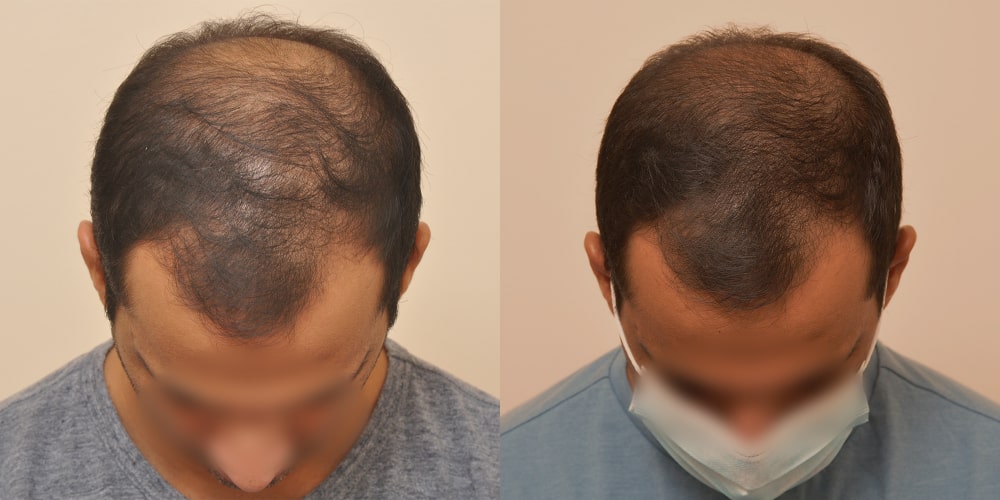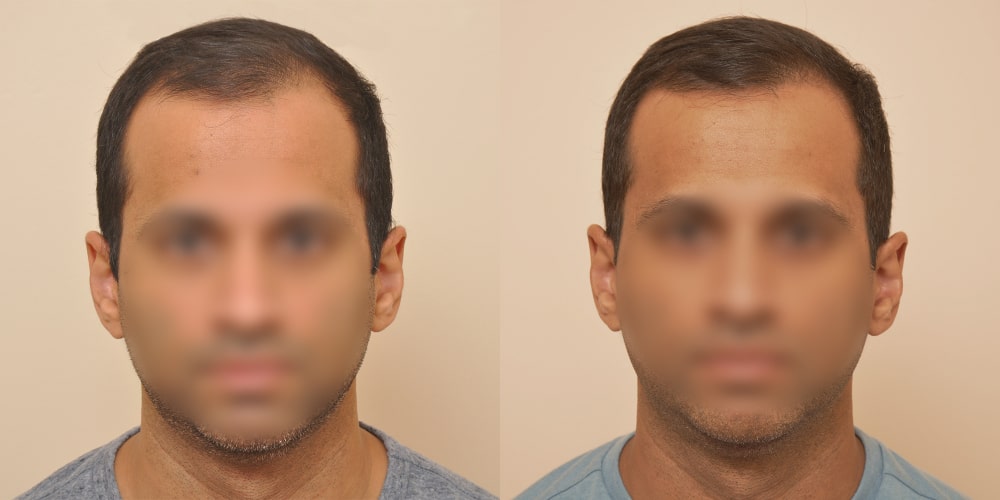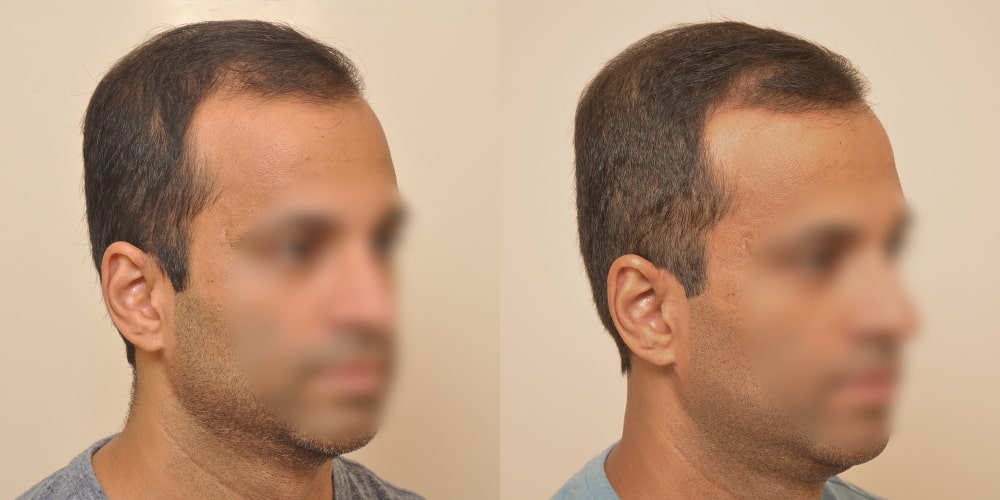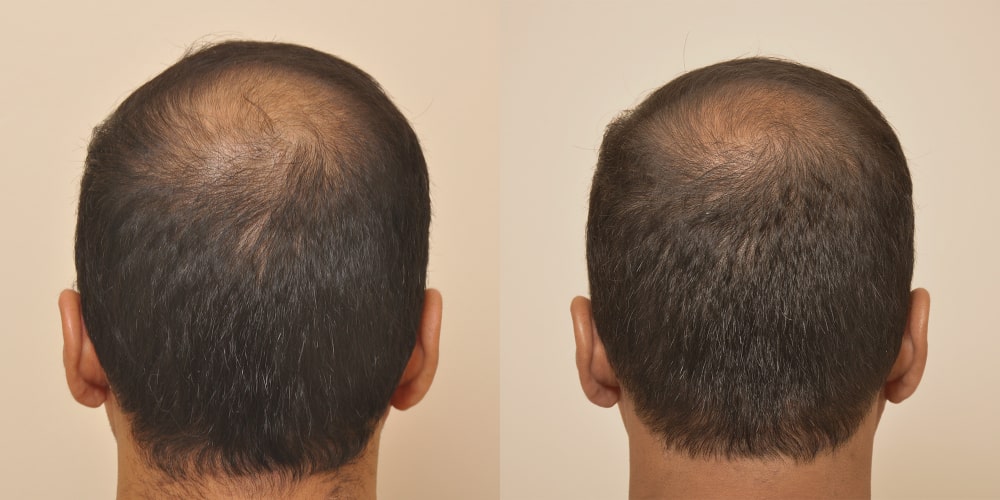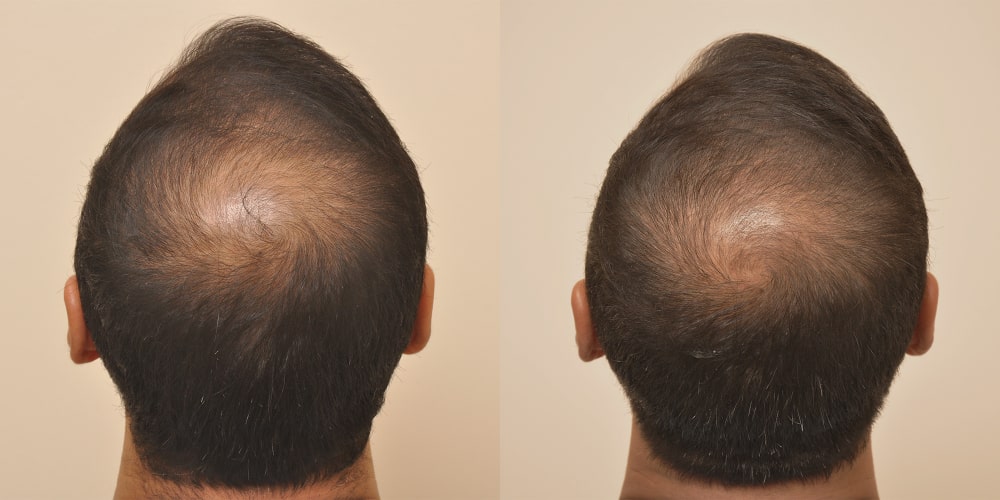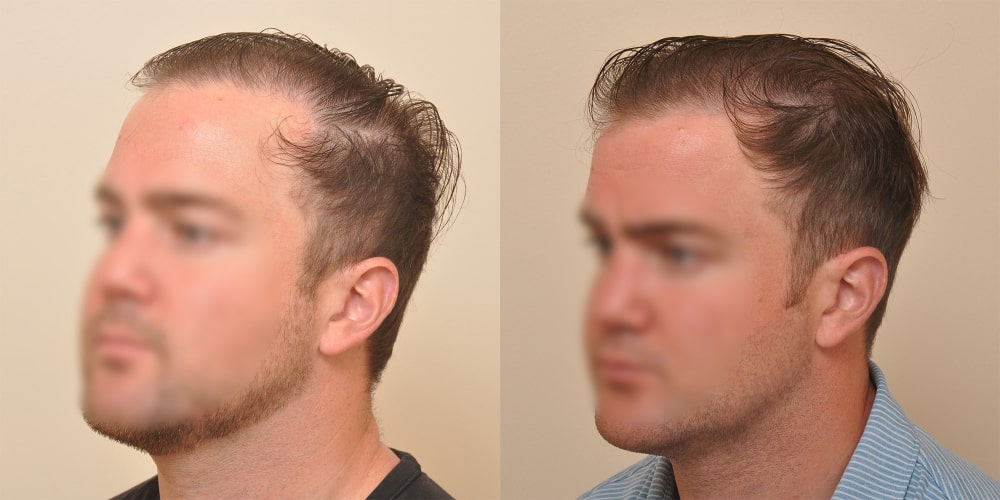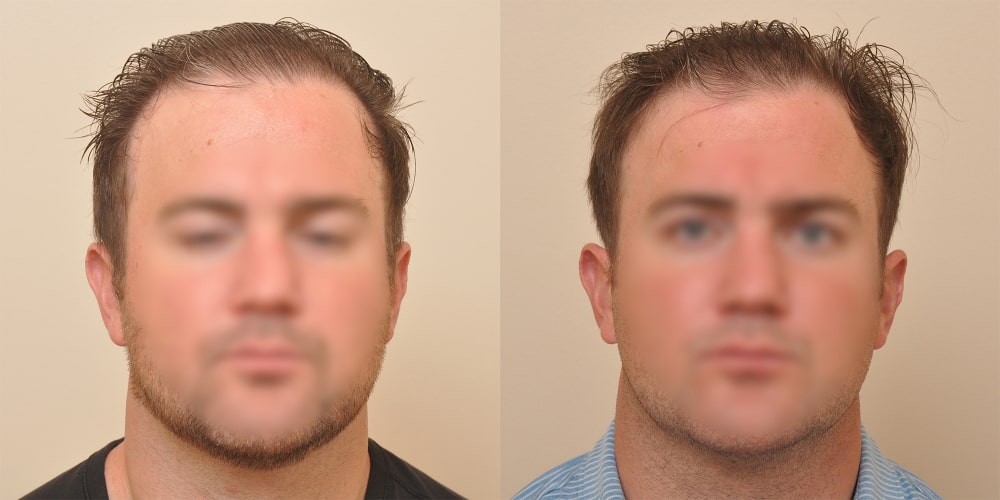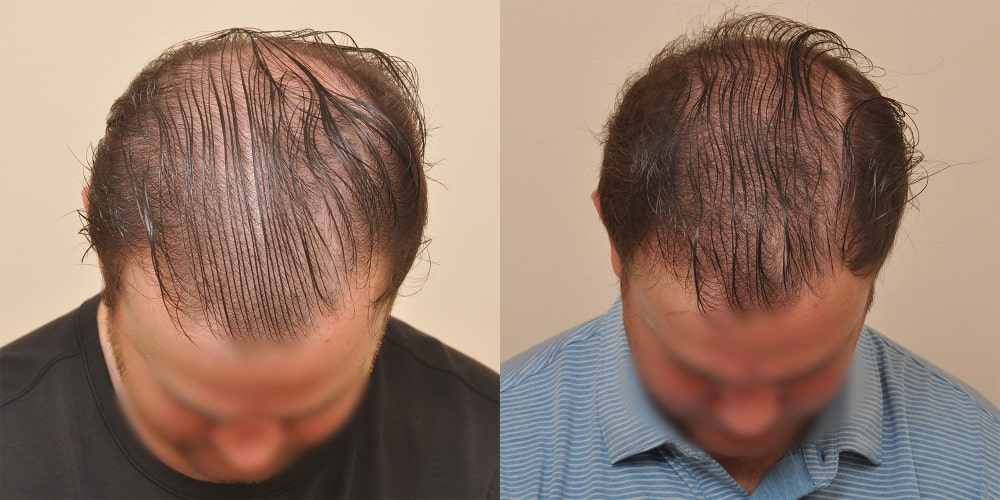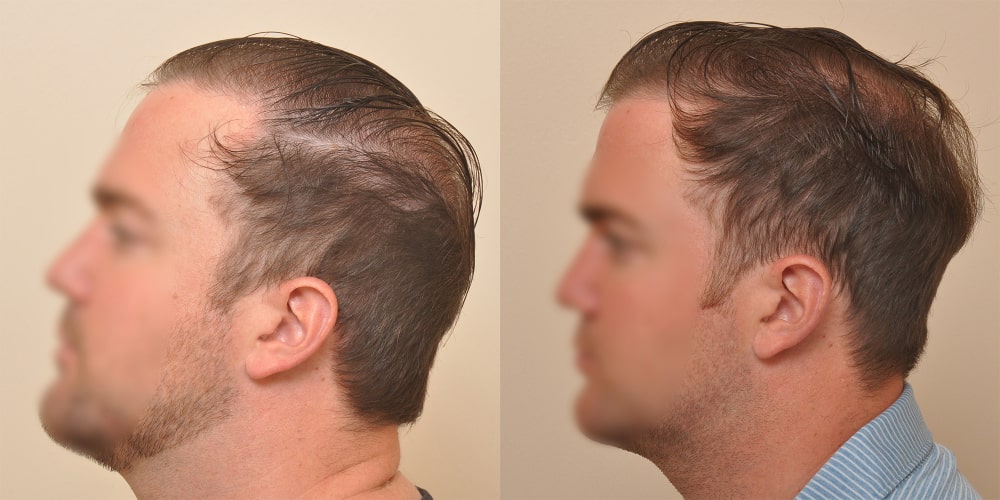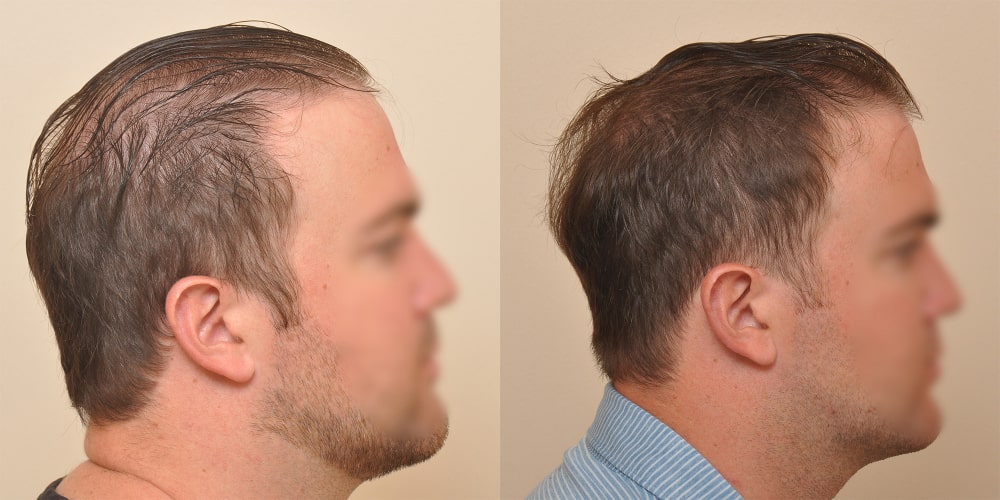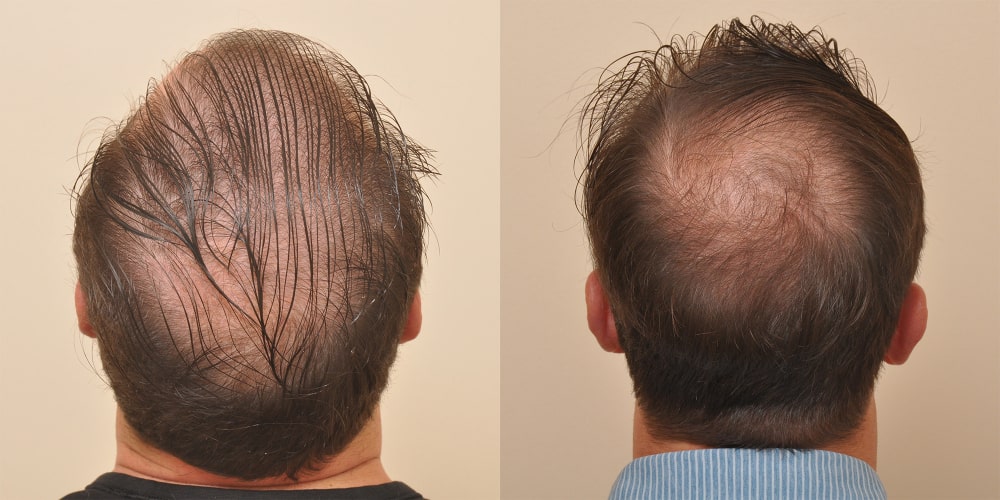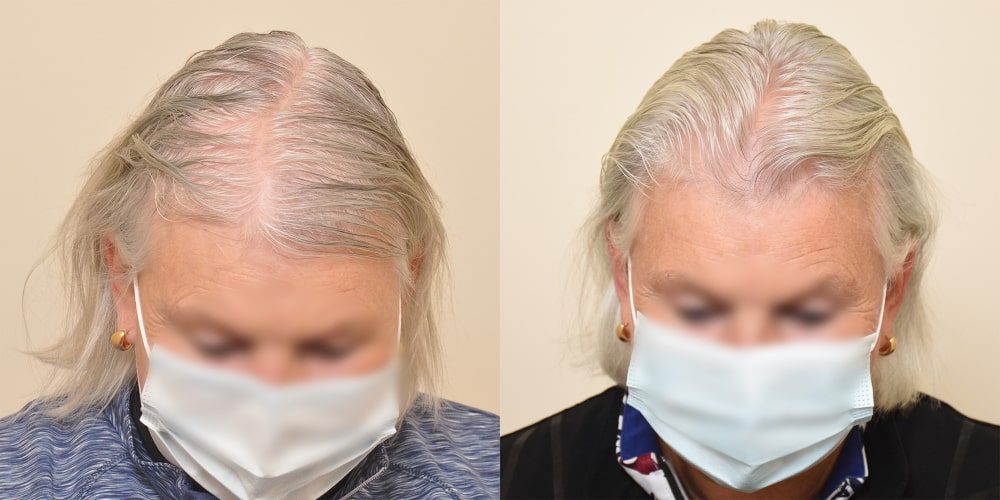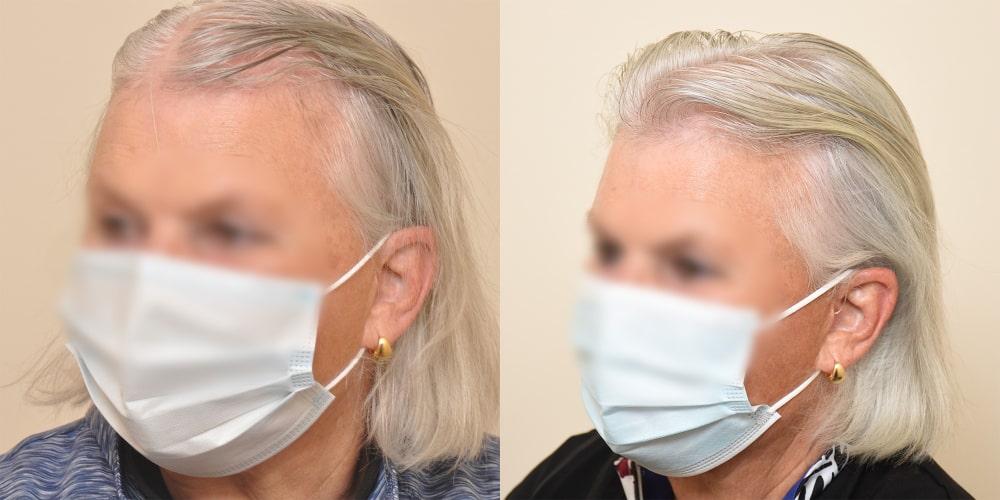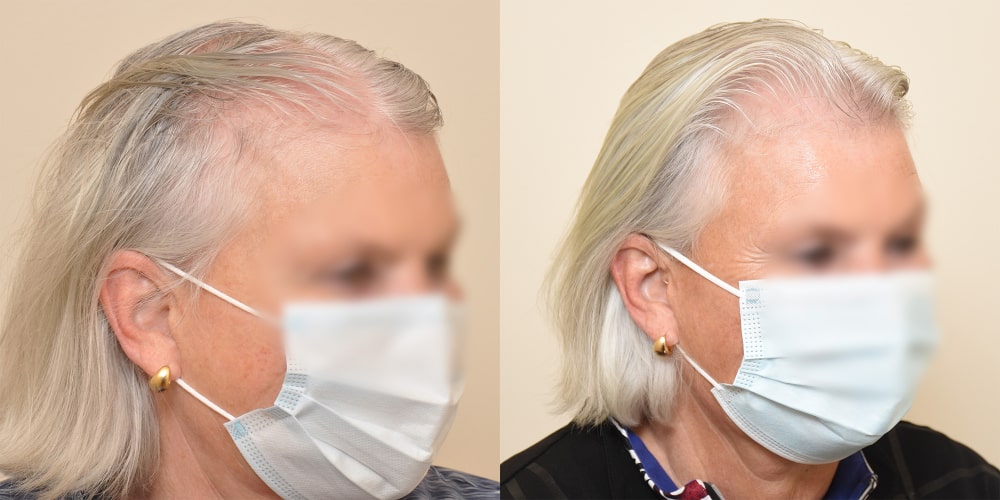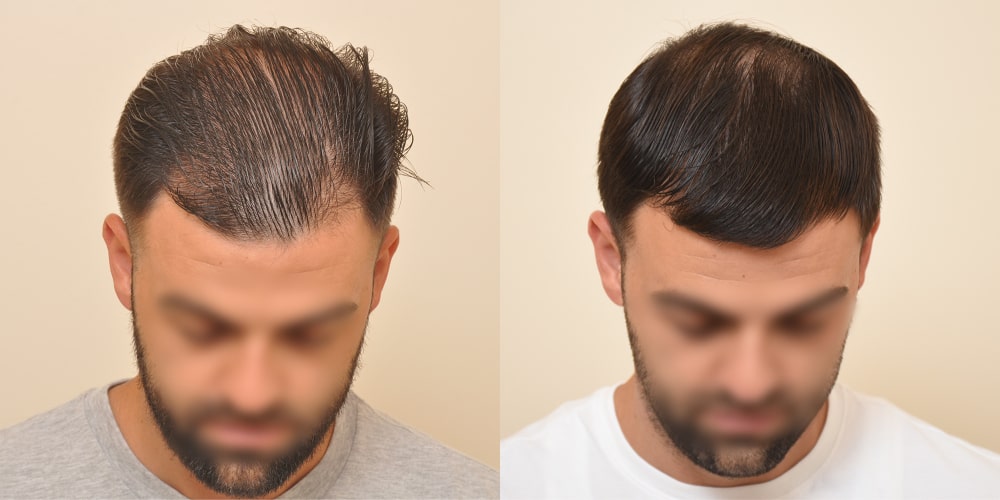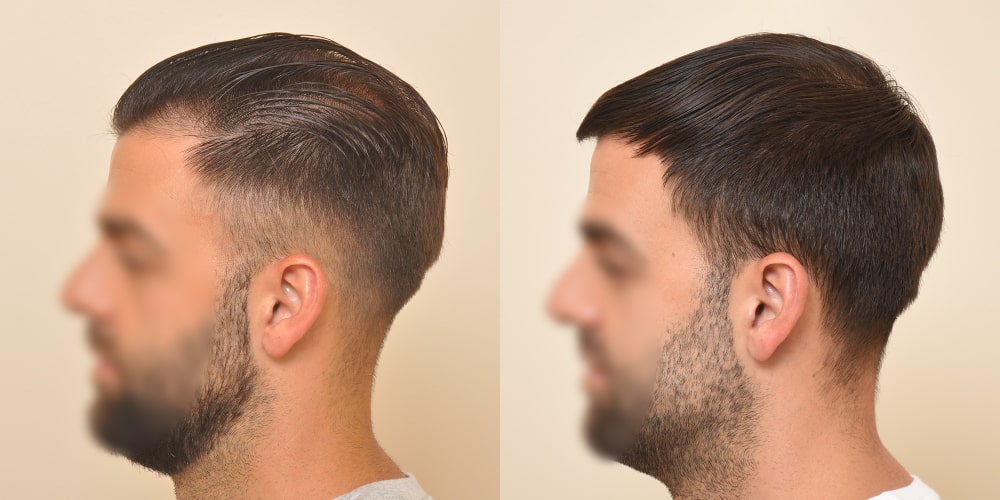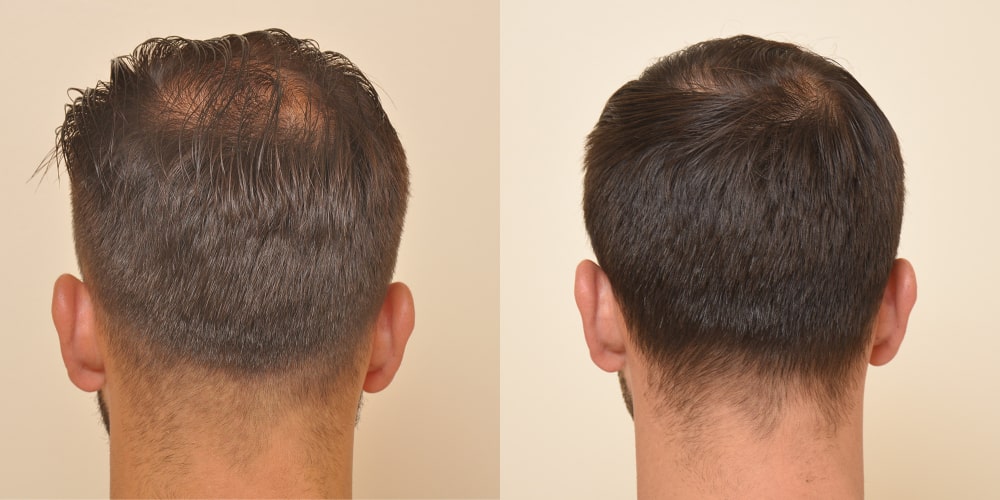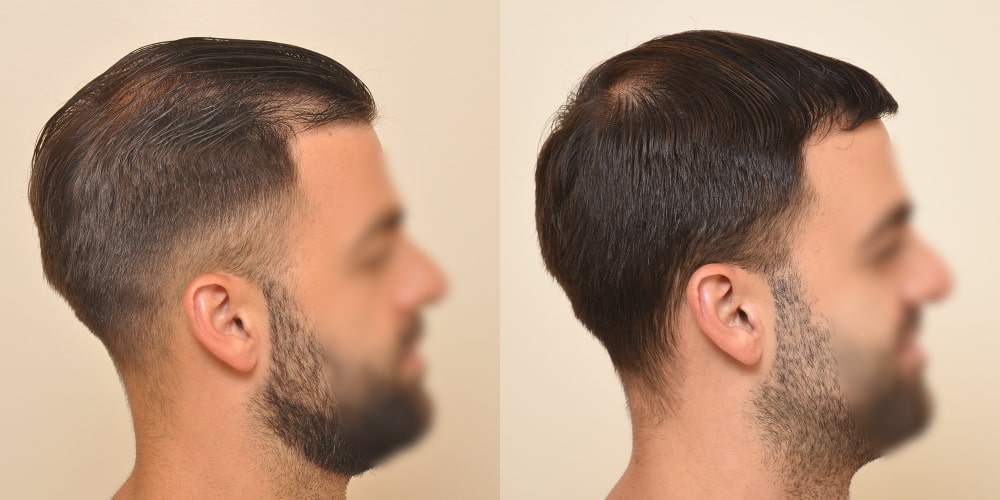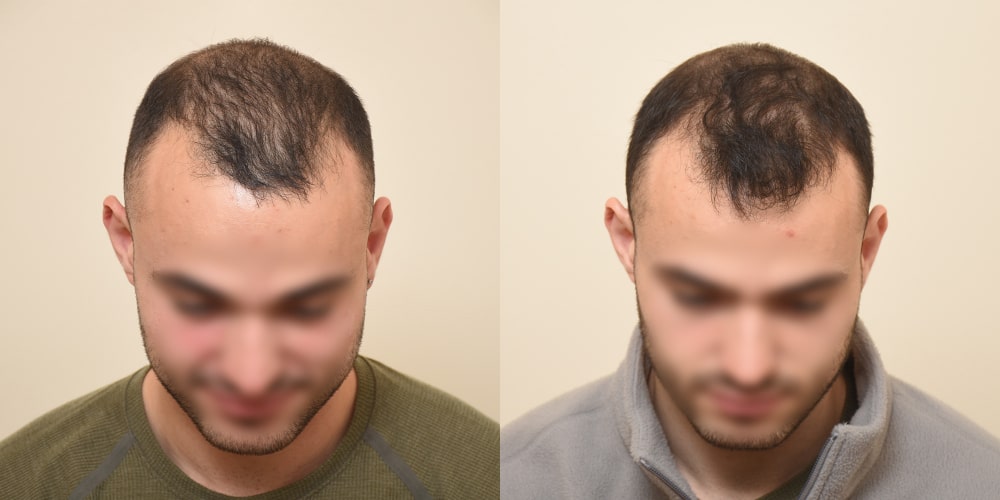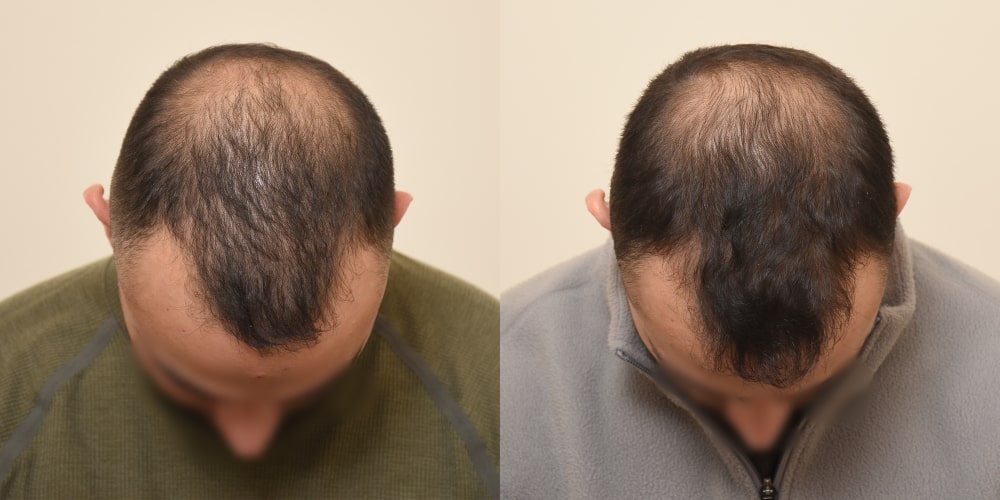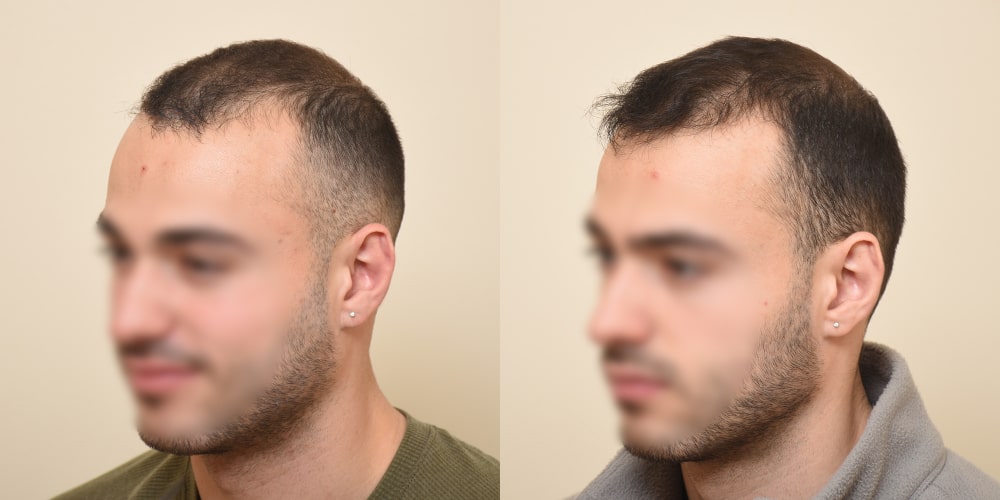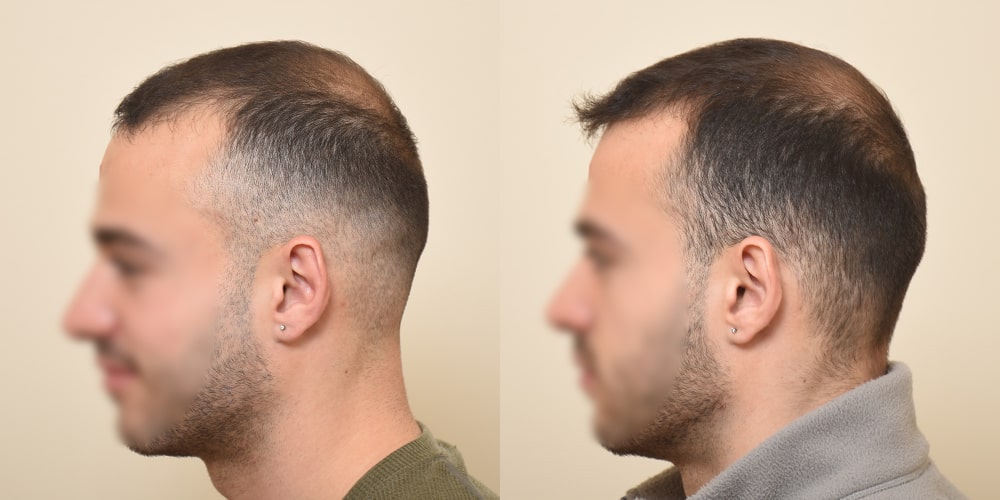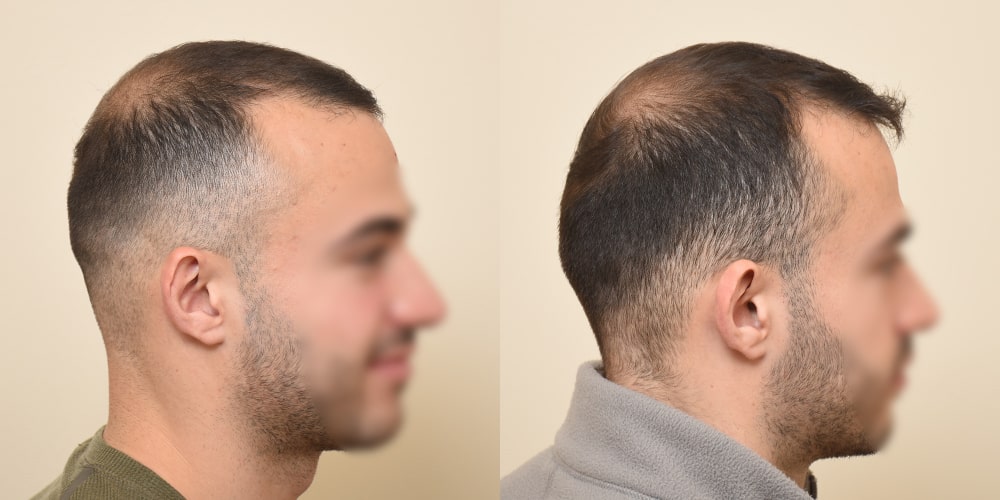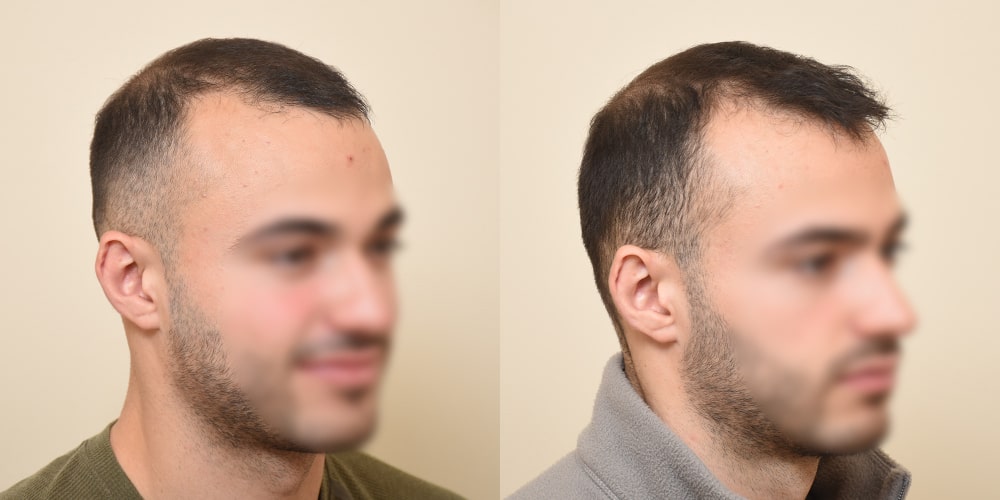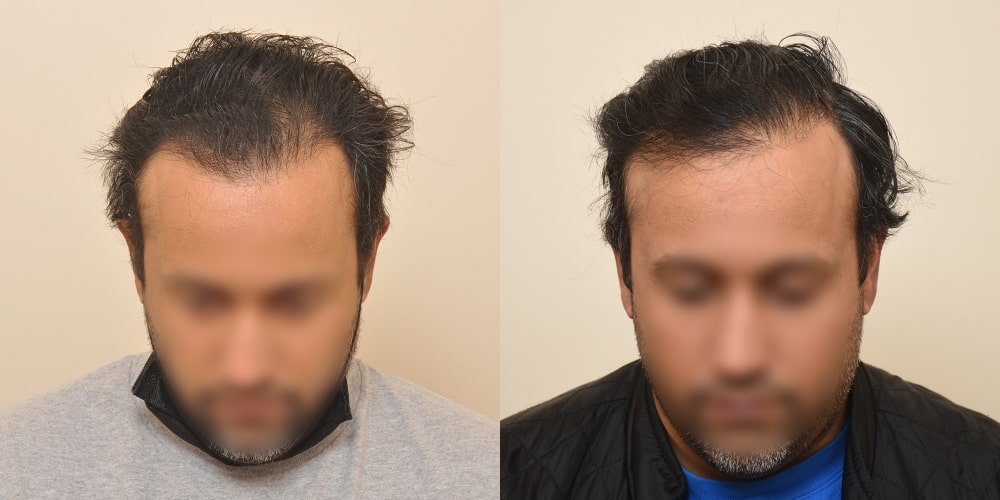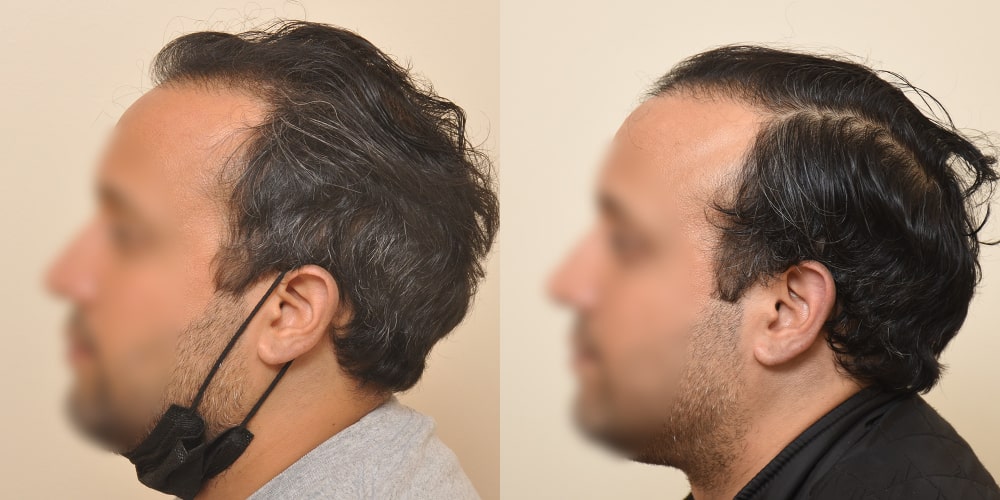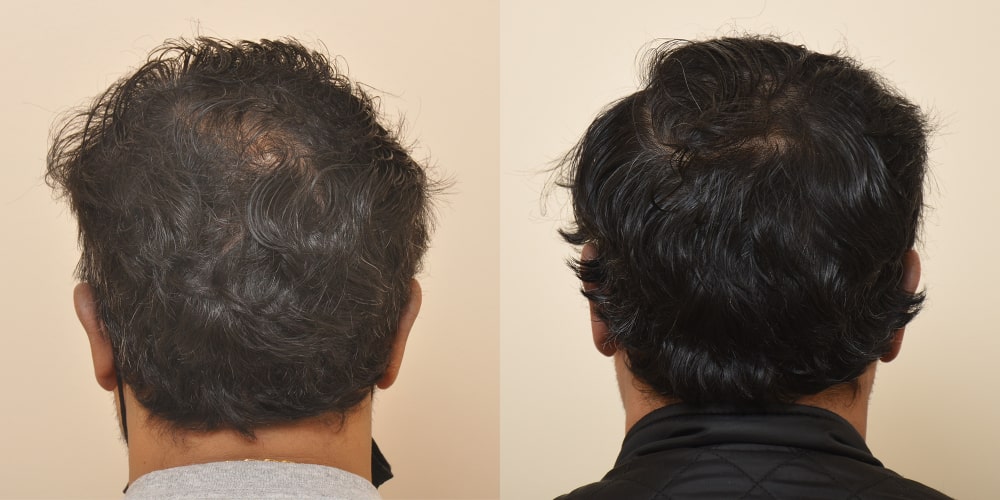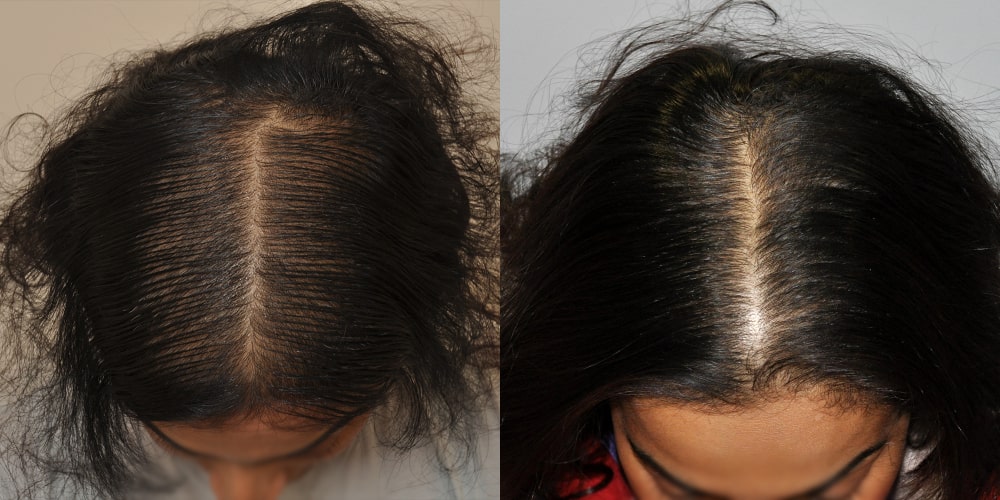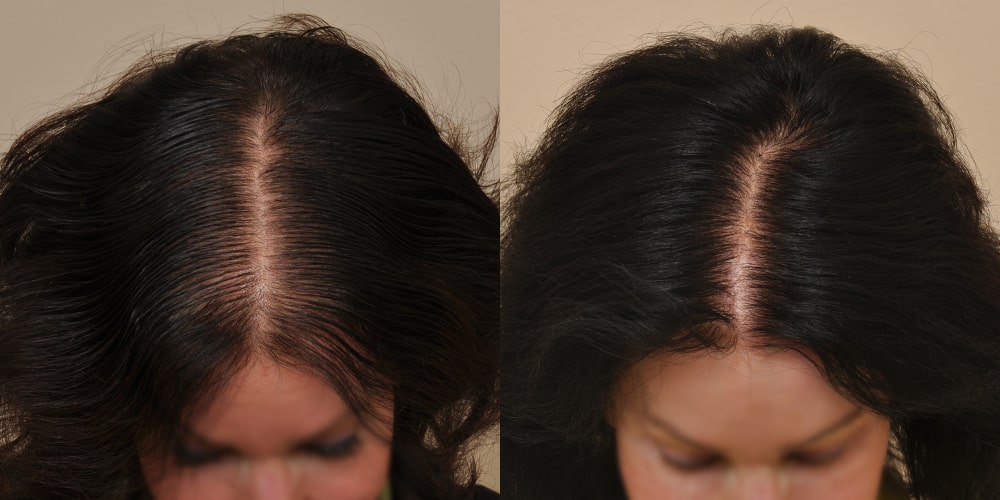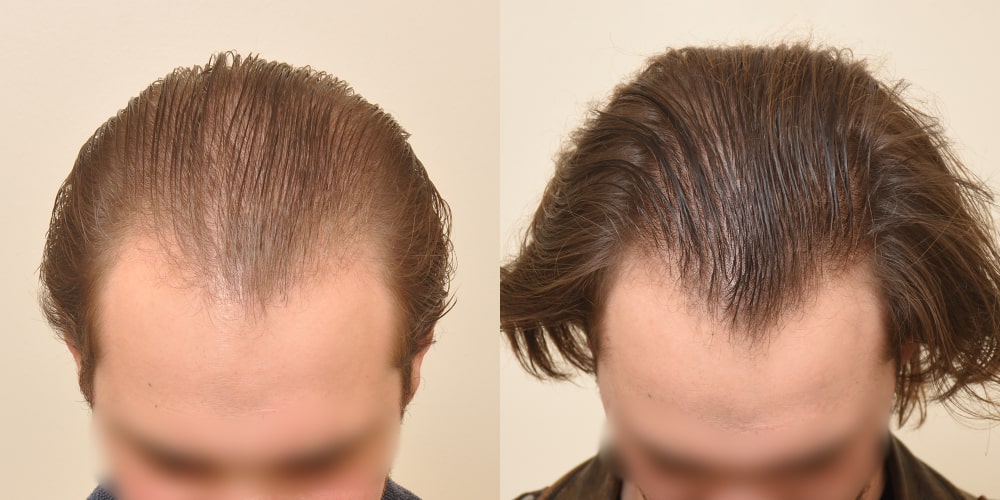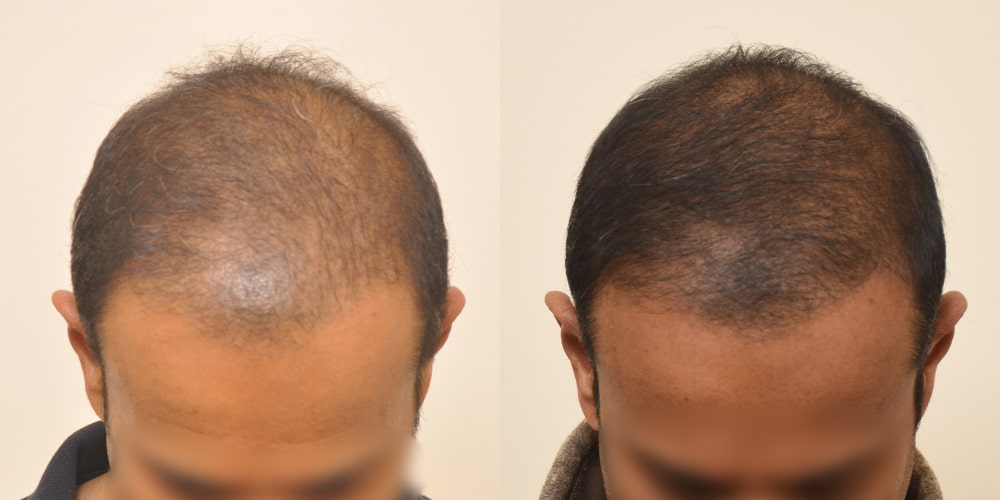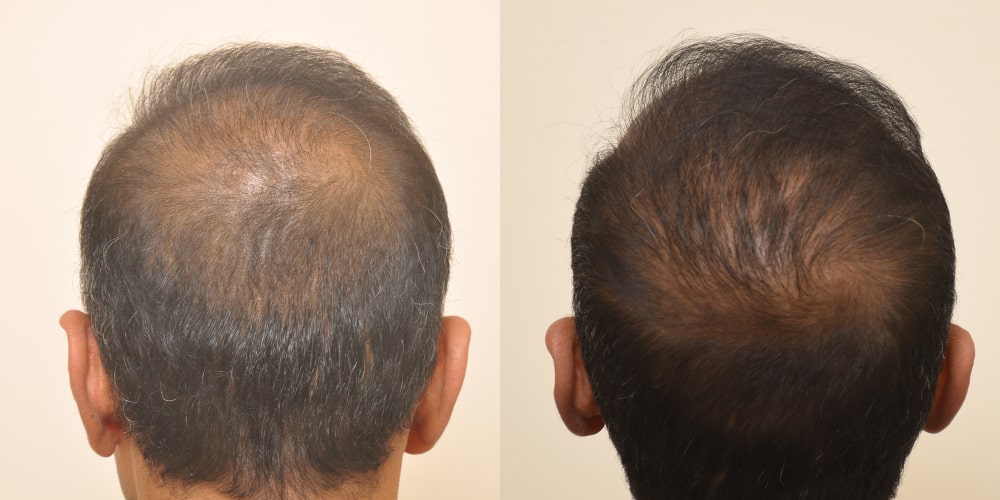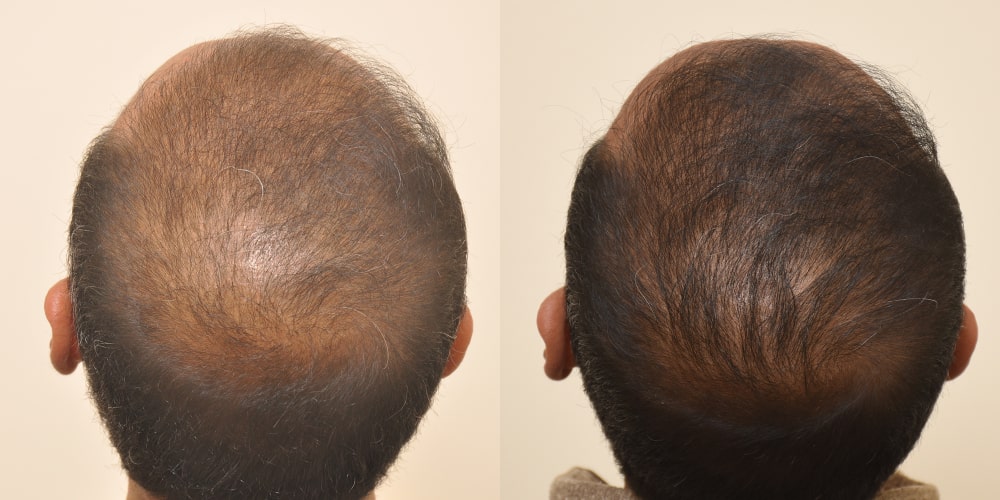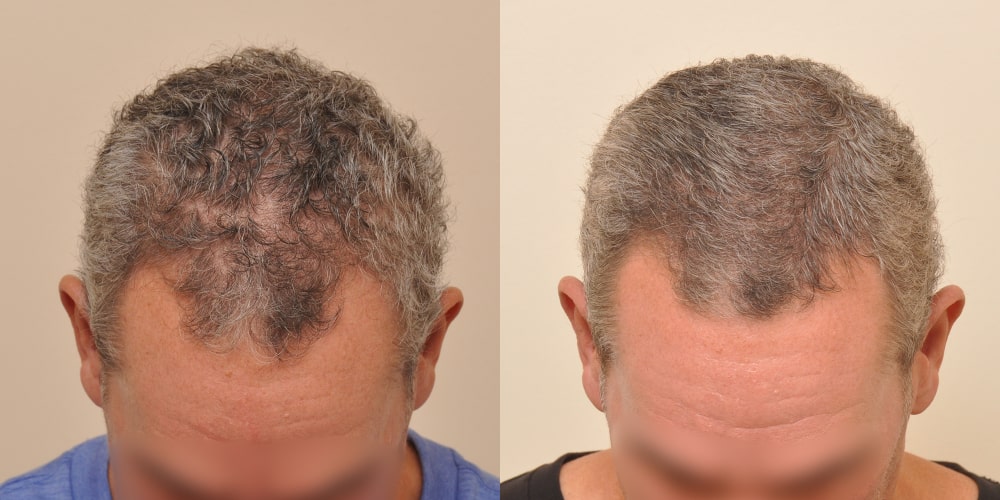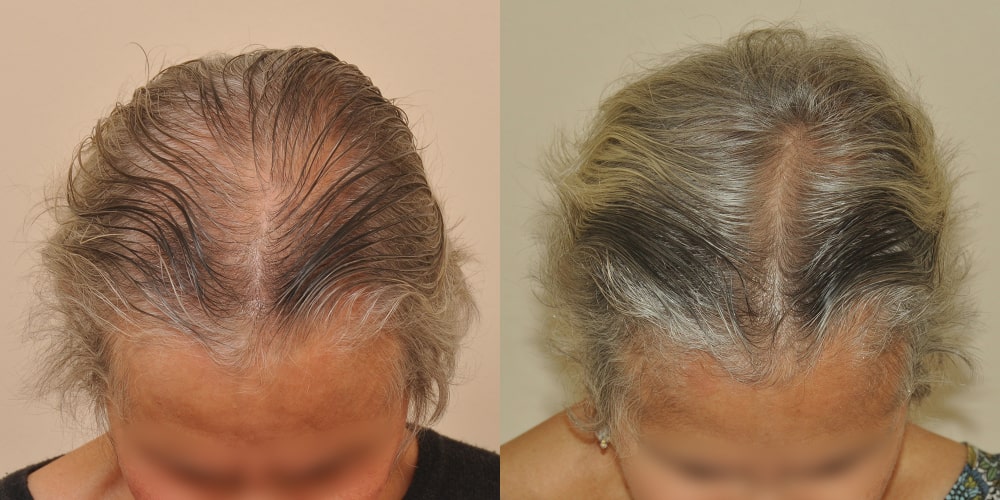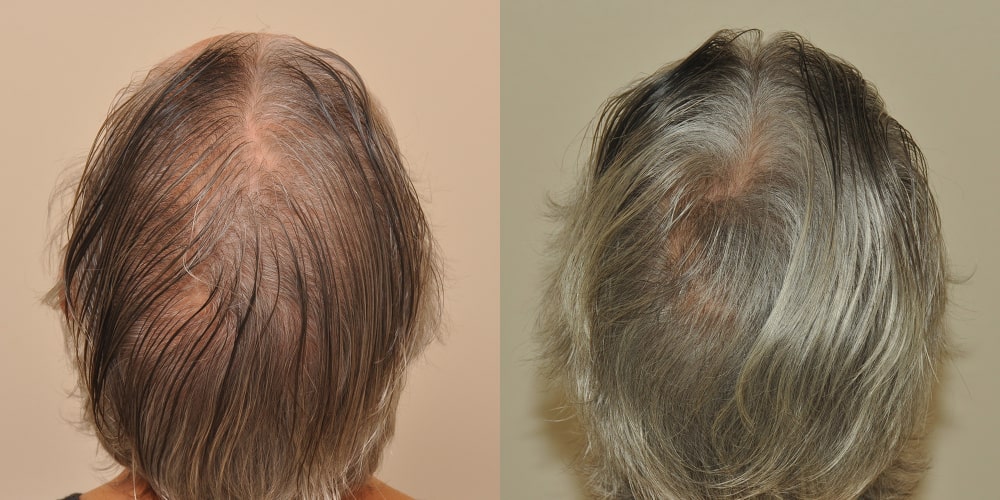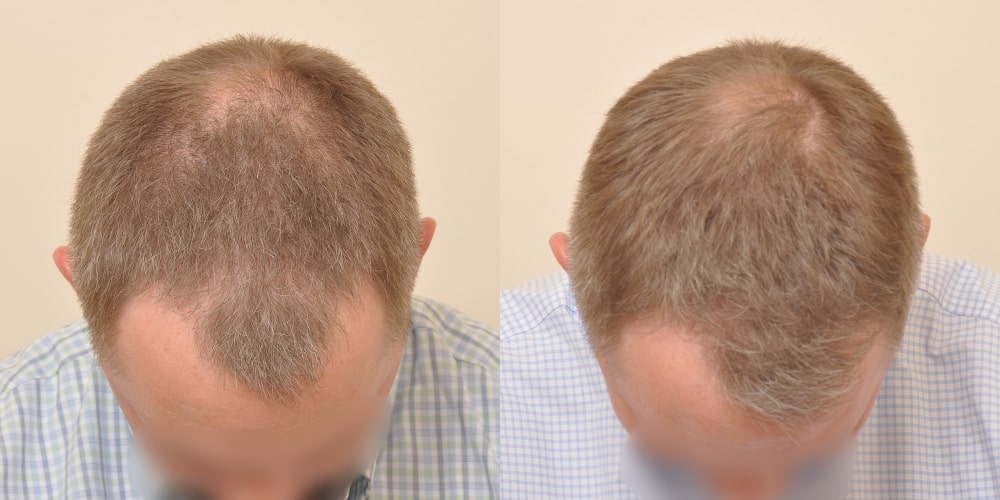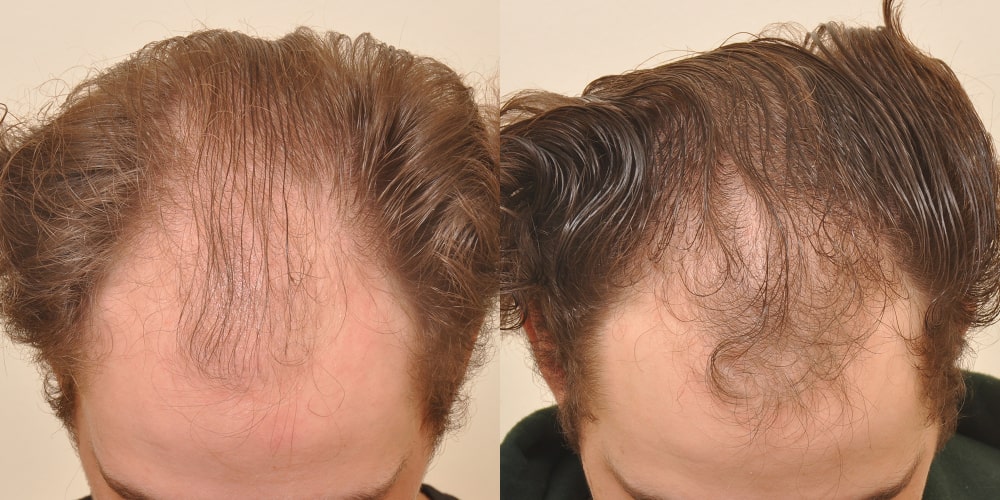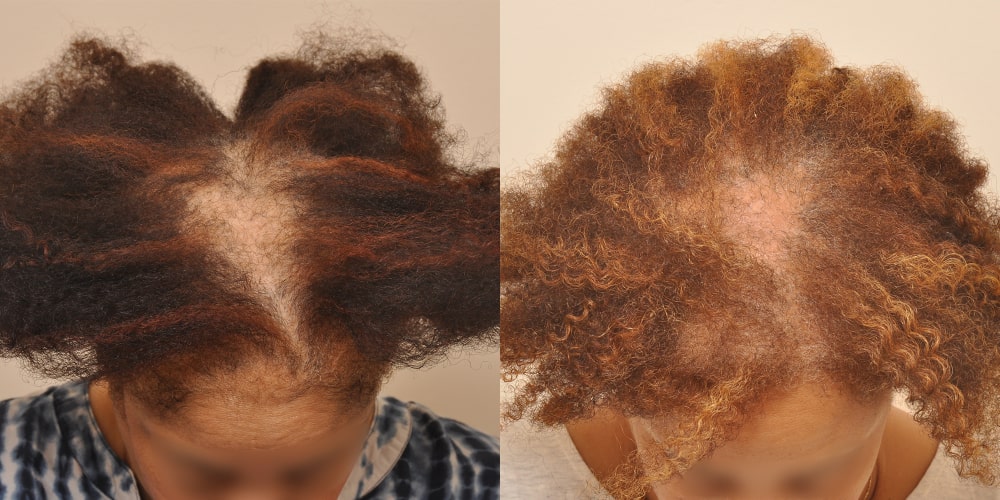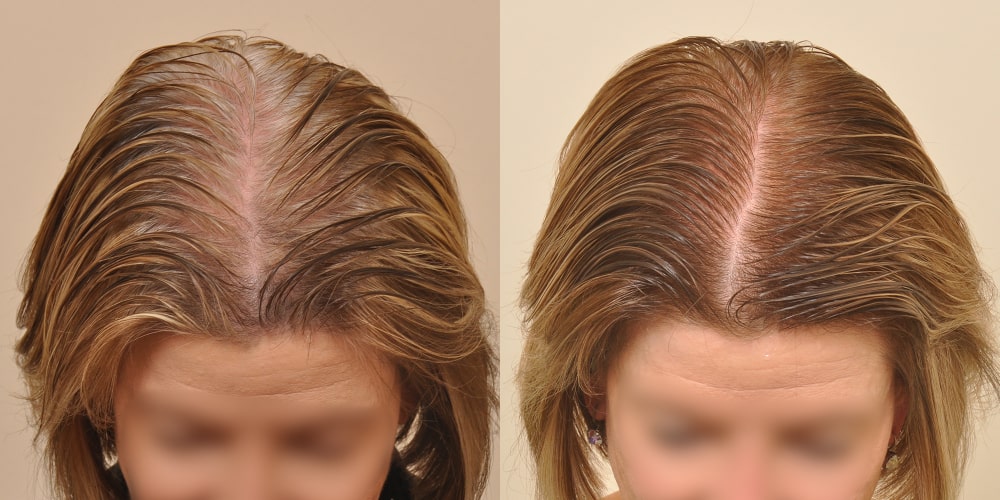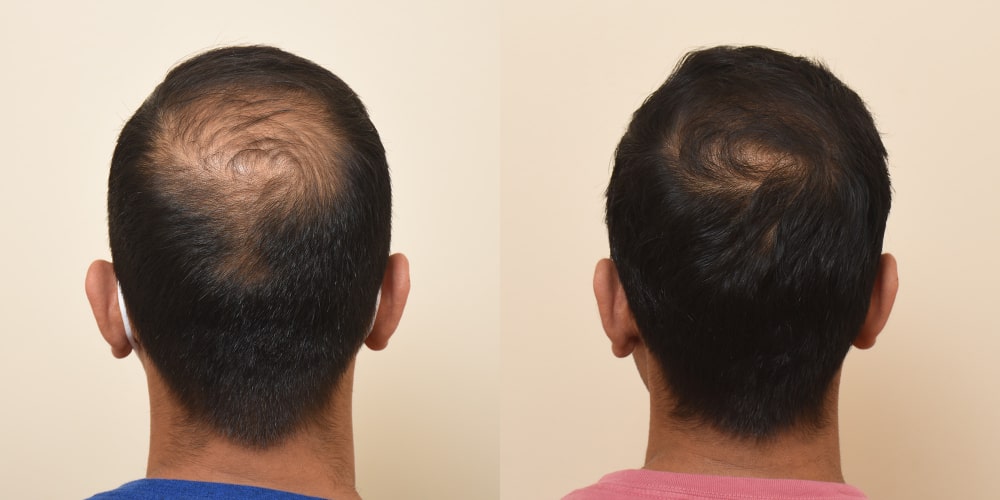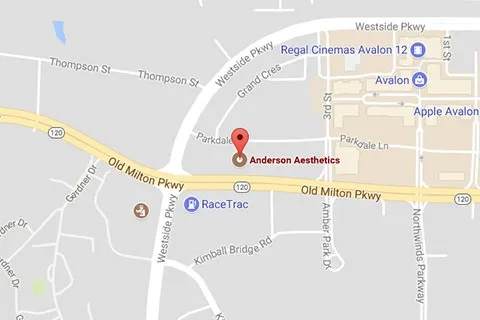PLATELET-RICH PLASMA THERAPY
Using your own blood to stimulate hair growth
Are you looking for a hair loss treatment that doesn’t require action every day or even every week? Platelet-rich plasma (PRP) injections are a safe, minimally invasive treatment option for patients experiencing hair loss. While the schedule will vary depending on your particular case, PRP injections are generally scheduled every six weeks for an initial treatment series, followed by ongoing injections for maintenance. PRP is an effective option that has been used successfully in medicine for decades and could be the right choice for your hair loss journey.
THE HEALING POWER OF YOUR OWN BLOOD
Platelet-rich plasma is derived by drawing blood, centrifuging it, and using just a portion for treatment of hair loss on your scalp. During a PRP treatment, your blood sample is placed in a centrifuge, which spins it at a high rate of speed to separate the blood into platelet-poor plasma (PPP), platelet-rich plasma (PRP), and red blood cells. The PRP portion, which is rich in platelets and growth factors, is carefully extracted for your treatment.
Regenerative Medicine Gallery
Click on any gallery to view in lightbox
CASE 1
CASE 2
CASE 3
CASE 4
CASE 5
CASE 6
CASE 7
CASE 8
CASE 9
CASE 10
CASE 11
CASE 12
CASE 13
CASE 14
CASE 15
CASE 16
CASE 17
PIONEERING FUE HAIR TRANSPLANT SURGERY SINCE 2003
With extensive expertise and more than 20 years of experience, the skilled surgeons at Anderson Center for Hair in Atlanta specialize in FUE hair transplant surgery. Dr. Anderson’s groundbreaking work in 2004, which was documented in a peer-reviewed medical journal, marked the first-ever FUE surgery performed globally. Benefit from their unmatched skills and join the thousands of satisfied patients who have undergone this remarkable hair restoration technique.
Understanding PRP
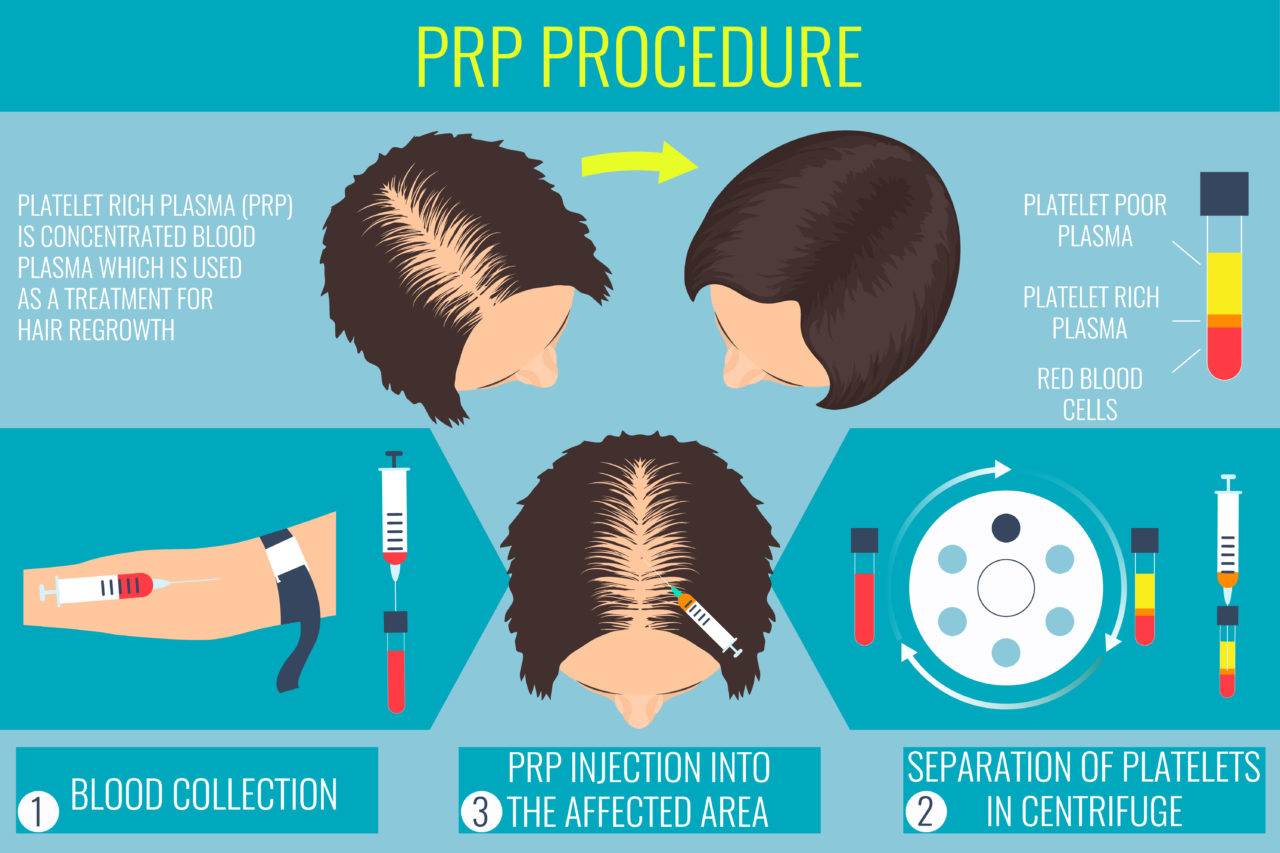
To better understand PRP, let’s first break down blood into its components, which include red blood cells, white blood cells, platelets, and plasma. Each of these parts has a unique function:
- Red blood cells (erythrocytes) are responsible for carrying oxygen from the lungs to the rest of the body. They contain a protein called hemoglobin, which binds to oxygen and carries it through the bloodstream.
- White blood cells (leukocytes) are a fundamental part of the body’s immune system. They defend against infection, foreign substances, and abnormal cells.
- Platelets (thrombocytes) are small cell fragments primarily involved in blood clotting. Scientists also discovered platelets contain multiple growth factors and cytokines. These proteins regulate cellular processes, such as inflammation, the formation of new blood vessels (angiogenesis), stem cell migration, and cell proliferation.
- Plasma is the yellow liquid that makes up the remaining 55% of our blood. It is composed mostly of water, but also contains proteins, electrolytes, and hormones. Plasma helps to regulate body temperature, maintain blood pressure, and transport nutrients throughout the body.
How does PRP work for hair loss?
The exact way that PRP promotes hair growth is not fully understood by doctors and scientists. PRP is believed to work for hair loss by stimulating hair follicle growth and regeneration. When PRP is injected into the scalp, the platelets release their growth factors and cytokines, which may stimulate various processes such as:
- Proliferation: The growth factors help increase the rate of cell division in the hair follicles, resulting in more hair-producing cells and thicker hair shafts.
- Migration: The cytokines in PRP help recruit stem cells to the hair follicles, which can contribute to new hair growth.
- Cell differentiation: The bioactive molecules in PRP promote the specialization of cells in the hair follicle, ensuring the proper development of hair strands.
- Angiogenesis: PRP stimulates the formation of new blood vessels in the scalp, which improves blood flow and nutrient delivery to the hair follicles, promoting healthier hair growth.
By harnessing the power of platelets and their growth factors, PRP therapy for hair loss offers a natural, minimally invasive treatment option for qualified patients with androgenetic alopecia.
What is the process for PRP treatment?
Step 1: Initial Consultation
The first step in the PRP treatment process is an initial consultation where we assess your hair loss, discuss your expectations, and confirm you are a suitable candidate for the treatment. You’ll take baseline photographs (privately store on your medical record), get your vital signs, and sign consent forms. Depending on the condition and length of your hair, you may also get your hair washed.
Step 2: Blood Collection
Next, a small amount of blood will be drawn from your arm, similar to a routine blood test.
Step 3: Separation of Platelets
The blood sample is then placed in a centrifuge, a machine that spins at high speed to separate the blood into its components: platelet-poor plasma (PPP), platelet-rich plasma (PRP), and red blood cells. The PRP layer, which is rich in platelets and growth factors, is carefully extracted for the treatment.
Step 4: Anesthesia
To ensure your comfort during the microneedling process, anesthesia is injected into the scalp first. This numbing agent will reduce any pain or discomfort associated with the microneedling process, making the treatment more comfortable for you.
Step 5: PRP Injections
Next, the prepared PRP solution is injected into the areas of need on the scalp. The PRP’s growth factors and platelets work to repair damaged hair follicles and stimulate new hair growth.
Step 6: Microneedling
To maximize efficacy, we also use microneedling for most patients at the Anderson Center for Hair. Microneedling is a technique that involves the use of a specialized device with fine, short needles to create controlled micro-injuries on the scalp. These micro-injuries stimulate the body’s natural healing process, increasing blood flow and collagen production in the treated area. Microneedling is thought to enhance the absorption and effectiveness of PRP.
Step 7: Post-Treatment Care
After the PRP application, your practitioner will clean any residual solution from your scalp and answer your questions. If you think of other questions after leaving the office, please don’t hesitate to call the front desk to be connected with the medical staff.
Frequently asked questions
Can Platelet-rich Plasma (PRP) cure hair loss?
No. There is no cure for androgenetic alopecia, which is the most common type of hair loss. It’s not a disease or a disorder. It’s simply a natural variant of the human condition. Whether or not hair loss will affect you is primarily determined by your genetics – both your mom’s and your dad’s sides of the family. But the rate at which you lose your hair can be slowed through medical interventions like PRP. PRP is an effective treatment for hair thinning. It can slow the progression of hair loss and, in some cases, restore hair thickness.
Am I an ideal candidate for PRP treatments for hair loss?
If you’re in the early stages of hair loss or have just noticed your hair is starting to thin, you’re likely a good candidate for PRP treatments. If you have no hair left in a given area or the hair has been gone for years, it’s less likely you’ll see a noticeable change. Every situation is unique, so the best way to determine if you’re an and ideal candidate is to schedule an appointment with a qualified doctor to be evaluated.
How many PRP treatments will I need?
The required number of PRP treatments differs among individuals. Generally, you can expect to undergo three to four sessions, spaced four to six weeks apart, and then continue with maintenance treatments every four to six months, ongoing.
Is there a recovery period or downtime after PRP treatments?
After PRP treatments there is minimal downtime. You can plan to resume your regular activities immediately after the procedure.
Does PRP treatment hurt?
While the injections might result in mild discomfort, a local anesthetic can be administered before we begin to alleviate any pain you may experience during the treatment.
How does PRP support hair transplant surgery?
Part of what determines the success of a hair transplant is how well tissue heals together. For this reason, PRP is used in every hair transplant procedure at the Anderson Center for Hair.
Think of PRP helping your new surgically implanted hairs the way fertilizer helps grow your lawn. Thanks to the advanced healing powers of PRP, we can minimize shock loss and maximize the formation of new blood vessels to support the newly implanted grafts. The PRP also aids stem cell migration to the micro wounds created where each new hair was implanted, allowing for improved tissue healing.
If you have purchased a series of PRP’s from us, the PRP you receive during surgery will not be deducted from your package. Please let your patient coordinator know when you’re booking your surgery so we can schedule or adjust your PRP series at the correct interval after your procedure.
What are the risks?
The platelet-rich plasma serum comes straight from your body, so there’s no need to worry about an allergic reaction. And since PRP treatments don’t require any surgery or suturing, there’s no recovery period. It’s over in less than an hour, right in the office. You can go home and resume daily activity almost immediately. It’s one of the perks of having an all-natural, minimally-invasive procedure.
Is PRP effective for hair loss?
PRP treatment has been used for decades in medicine with widely-cited success. There is growing clinical evidence supporting its effectiveness for hair loss. Patients who have undergone PRP treatment at the Anderson Center for Hair have reported satisfaction with their results.
It is important to note that PRP may be more effective for certain types of hair loss, particularly androgenetic alopecia, and its results may vary from person to person. Getting PRP treatments alongside other hair loss prevention options such as oral medications, low-level laser therapy, and topical solutions may improve its effectiveness. To understand the best combination of options that will be an effective treatment plan for your unique case, request a consultation with one of our doctors.
Sources
Alves R, Grimalt R. A Review of Platelet-Rich Plasma: History, Biology, Mechanism of Action, and Classification. Skin Appendage Disord. 2018 Jan;4(1):18-24. doi: 10.1159/000477353. Epub 2017 Jul 6. PMID: 29457008; PMCID: PMC5806188.
Cole BJ, Seroyer ST, Filardo G, Bajaj S, Fortier LA. Platelet-rich plasma: where are we now and where are we going? Sports Health. 2010 May;2(3):203-10. doi: 10.1177/1941738110366385. PMID: 23015939; PMCID: PMC3445108.
Gentile P, Garcovich S, Bielli A, Scioli MG, Orlandi A, Cervelli V. The Effect of Platelet-Rich Plasma in Hair Regrowth: A Randomized Placebo-Controlled Trial. Stem Cells Transl Med. 2015 Nov;4(11):1317-23. doi: 10.5966/sctm.2015-0107. Epub 2015 Sep 23. PMID: 26400925; PMCID: PMC4622412.
Hajdu SI. A note from history: The discovery of blood cells. Ann Clin Lab Sci. 2004 Spring;33(2):237-8. PMID: 12817630.
Mościcka P, Przylipiak A. History of autologous platelet-rich plasma: A short review. J Cosmet Dermatol. 2021 Sep;20(9):2712-2714. doi: 10.1111/jocd.14326. Epub 2021 Jul 14. PMID: 34214233; PMCID: PMC9291029.

